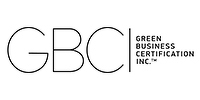
Green Building Certification Inc. (GBCI)
Course Number/ID: AEC2147:1
Approval ID: 920033272
GBCI CE Hours:
1
GBCI approved for GBCI LEED Specific CE (BD+C, ID+C, Green Associate), WELL Specific CE. Course approval #920033272.
AEC Daily reports Learning Units on members' behalf.
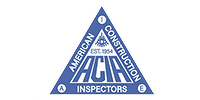
American Construction Inspectors Association (ACIA)
Course Number/ID: AEC2147:1
Approval ID: AEC2147:1
Credits:
1
This course is approved for ACIA RCI CEUs.
ACIA members self-report to ACIA by submitting their certificate of completion to ACIA for RCI renewal.

American Institute of Building Design (AIBD)
Course Number/ID: AEC2147:1
Approval ID: AEC2147:1
CE Hours:
1
AIBD approved course.
Learners self-report.

American Institute of Constructors (AIC)
Course Number/ID: AEC2147:1
Approval ID: AEC2147:1
CPD Hours:
1
AIC approved course.
Hours must be self-reported to the AIC.

American Society of Heating, Refrigerating and Air-Conditioning Engineers (ASHRAE)
Course Number/ID: AEC2147:1
Approval ID: AEC2147:1
PDHs:
1
Course meets ASHRAE guidelines for acceptable Professional Development Hours (PDHs) for recertification purposes. Ensure this course content is related to ASHRAE certification practice area: BEAP, BEMP, CPMP, HBDP, HFDP & OPMP.
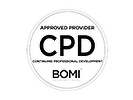
Building Owners and Managers Institute - Continuing Professional Development (BOMI CPD)
Course Number/ID: AEC2147:1
Approval ID: AEC2147:1
CPD Hours:
1
BOMI approved course. This program qualifies for BOMI Institute Continuing Professional Development (CPD) credit for RPA, FMA, and/or SMA graduates.
Members must self-report CPD hours.

California Council for Interior Design Certification (CCIDC)
Course Number/ID: AEC2147:1
Approval ID: AEC2147:1
CE Hours:
1
CCIDC approved course.
Members must self-report CEU hours to CCIDC.

Decorator and Designers Association (DDA)
Course Number/ID: AEC2147:1
Approval ID: AEC2147:1
CEUs:
0.1
Members must self-report CEUs to DDA.
DDA will accept all IDCEC-approved courses.
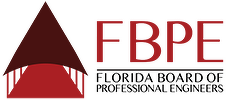
Florida Board of Professional Engineers (FBPE)
Course Number/ID: AEC2147:1
Approval ID: AEC2147:1
Provider Number: 0004278, Sequence Number 0000031
PDHs:
1
FBPE approved provider.
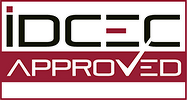
International Design Continuing Education Council Inc. (IDCEC)
Course Number/ID: AEC2147:1
Approval ID: CC-124981-1000
CEUs:
0.1
HSW_Sustainability
This CEU is registered with the International Design Continuing Education Council Inc. (IDCEC) for continuing education credits. This credit will be accepted by the American Society of Interior Designers (ASID), International Interior Designers Association (IIDA) and Interior Designers of Canada (IDC). The content included is not deemed or construed to be an approval or endorsement by IDCEC of any material or construction or any method or manner of handling, using, distributing or dealing in any material or product. Questions related to specific materials, methods and services should be directed to the instructor or provider. This program is registered for CEUs (continuing education credits).

The International Association of Certified Home Inspectors (InterNACHI)
Course Number/ID: AEC2147:1
Approval ID: AEC2147:1
CE Hours:
1
InterNACHI approved course.
Members must self-report CE hours to InterNACHI.

Oregon Construction Contractors Board (CCB)
Course Number/ID: AEC2147:1
Approval ID: AEC2147:1
Hour(s)
1
The course is approved by the State of Oregon Construction Contractors Board.
Members must self-report.

Louisiana State Board of Examiners of Interior Designers (LSBID)
Course Number/ID: AEC2147:1
Approval ID: AEC2147:1
CEU
1
LSBID approved course. Members self-report their credit to the Louisiana State Board of Interior Designers.
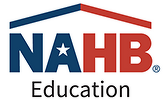
National Association of Home Builders (NAHB)
Course Number/ID: AEC2147:1
Approval ID: AEC2147:1
CE Hours:
1
This program meets NAHB's continuing education requirements for one or more of the following designations: Certified Graduate Associate (CGA), Certified Graduate Builder (CGB), Certified Graduate Remodeler (CGR), Certified Green Professional (CGP), Graduate Master Builder (GMB), Graduate Master Remodeler (GMR), Certified Aging-In-Place Specialist (CAPS)

National Association of the Remodeling Industry (NARI)
Course Number/ID: AEC2147:1
Approval ID: AEC2147:1
CEUs:
0.1
NARI approved course.
0.1 CEU toward certification renewals. 1 Hour toward certification application.

Registered Continuing Education Program (RCEP)
Course Number/ID: AEC2147:1
Approval ID: 195622
PDH:
1
AEC Daily is an RCEP-approved continuing education provider.
Credit earned on completion of this program will be reported to RCEP.

The Alberta Association of Architects (AAA)
Course Number/ID: AEC2147:1
Approval ID: AEC2147:1
Provider No.: A-002
Learning hours:
1
This course is approved as a Structured Course.
AAA Members must self-report their learning hours to AAA.

Architects' Association of New Brunswick (AANB)
Course Number/ID: AEC2147:1
Approval ID: AEC2147:1
Learning Hours:
1
This course may qualify for either core/structured or self-directed/non-structured learning hours.

Architects Association of Prince Edward Island (AAPEI)
Course Number/ID: AEC2147:1
Approval ID: AEC2147:1
Learning hours:
1
This course is approved as a Core Learning Activity.
Members must self-record their learning hours on the RAIC|Architecture Canada Transcript Database, https://raic.org/transcripts.
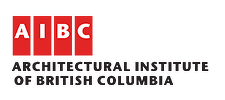
Architectural Institute of British Columbia (AIBC)
Course Number/ID: AEC2147:1
Approval ID: AEC2147:1
Learning units:
1
AIBC members may self-report this learning activity for consideration of AIBC learning units.

Canadian Association of Home and Property Inspectors (CAHPI)
Course Number/ID: AEC2147:1
Approval ID: AEC2147:1
MRC Hours
1
CAHPI approved course, MRC Hours.
Members must self-report MRC hours to CAHPI.
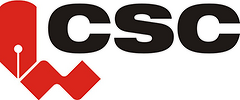
Construction Specifications Canada (CSC)
Course Number/ID: AEC2147:1
Approval ID: AEC2147:1
PDE Hours:
1
CSC approved course.
Members must self-report PDE hours to CSC.

Newfoundland & Labrador Association of Architects (NLAA)
Course Number/ID: AEC2147:1
Approval ID: AEC2147:1
Learning units:
1
This course is approved as a core course.
Members must self-report LUs through the MCET National Con Ed reporting website. (www.architranscripts.ca/default.htm)
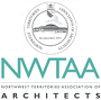
Northwest Territories Association of Architects (NWTAA)
Course Number/ID: AEC2147:1
Approval ID: AEC2147:1
Learning Hours:
1
This course is approved as a Structured course.
Members must self-report Learning Hours through the National Con Ed reporting website at https://www.raic.org/transcripts/default.htm

The Nova Scotia Association of Architects (NSAA)
Course Number/ID: AEC2147:1
Approval ID: AEC2147:1
Learning Hours:
1
This course may qualify as a Core/Structured Activity.

Ontario Association of Architects (OAA)
Course Number/ID: AEC2147:1
Approval ID: AEC2147:1
Hours:
1
This course may apply to both OAA structured and unstructured learning as long as it addresses the required subject matter topics.
Members must self-report activity to OAA and retain your Certificate of Completion.

Ordre des architectes du Québec (OAQ)
Course Number/ID: AEC2147 / Cours # AEC2147
Approval ID: AEC2147 / Cours # AEC2147
Hours / Nombre d’heures:
1
This course qualifies for self-directed learning activity with the OAQ. / Ce cours est reconnu par l’OAQ comme activité d’auto-apprentissage.
Members must self-report hours to OAQ. / Les membres doivent rapporter eux-mêmes leurs heures à l'OAQ.
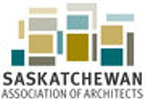
Saskatchewan Association of Architects (SAA)
Course Number/ID: AEC2147:1
Approval ID: AEC2147:1
Provider No.: 1036
Learning units:
1
This course is approved as a core course.
Members must self-report LUs through the RAIC National Con Ed reporting website. http://raic.org/transcripts.

